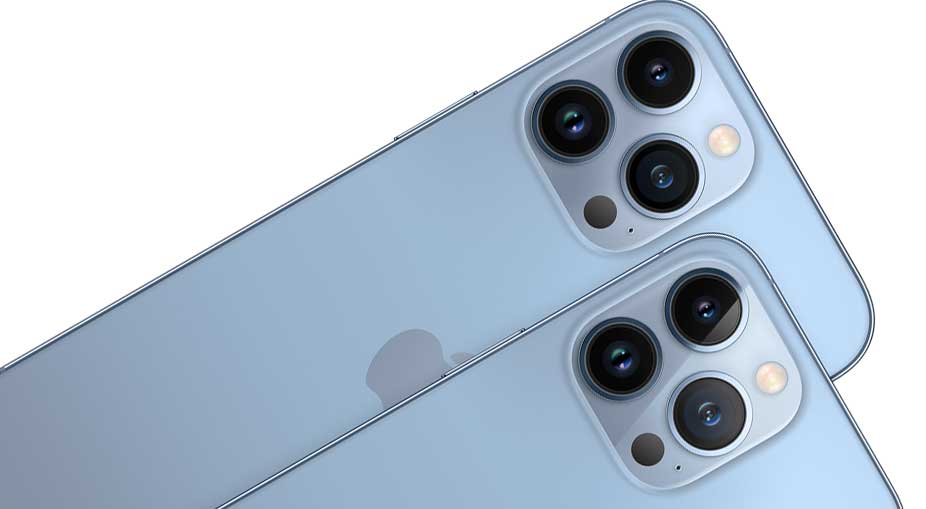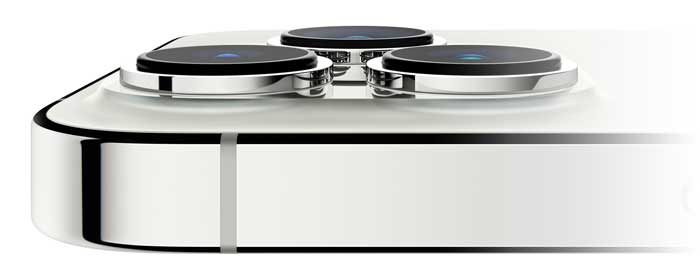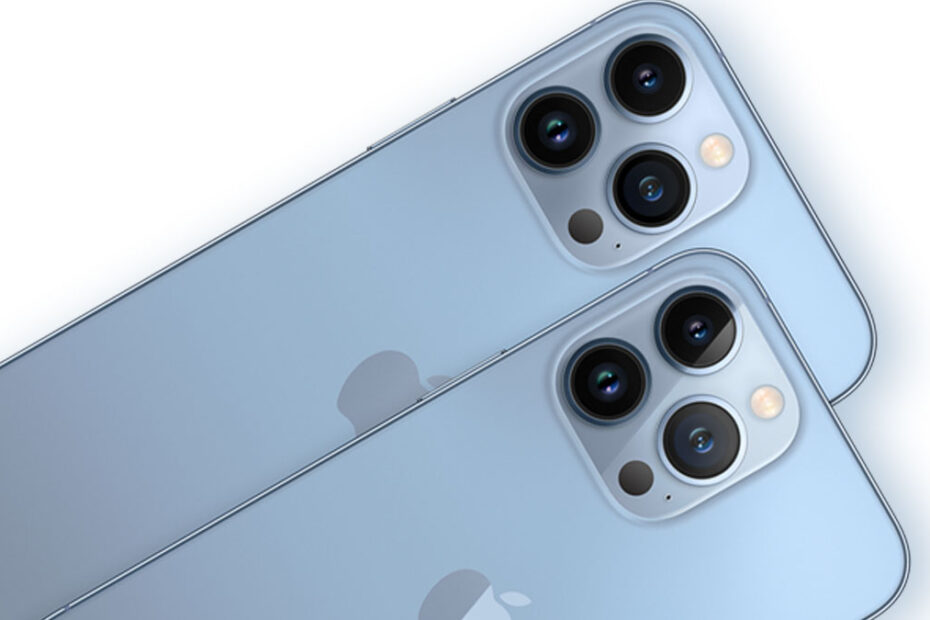The iPhone 13 Pro is a very impressive smartphone, but you might wonder why the iPhone 13 Pro has 3 cameras. The most basic explanation is that each camera must use its own unique combination of lens focal length and sensor size to achieve its angle of view.
After all, there’s no way Apple could insert a 77mm telephoto lens into something less than 8mm thick. But by putting a tiny 12mm2 sensor behind a 9mm lens, Apple achieved a 77mm-like angle of view. However, smaller sensors don’t perform as well, and Apple used a separate, larger 44mm2 sensor for its wide-angle camera. Jump to Conclusion
Table of Contents
- What is focal length?
- How sensor size affects Angle of View
- So why does iPhone 13 Pro have 3 cameras?
- Should you buy an iPhone 13 Pro for Photography?
- Conclusion
- Shop for iPhone
What is focal length?
Focal length is an engineering term but one that has become synonymous with angle-of-view. Measured in degrees, angle-of-view is simply a measure of how wide or how zoomed-in you are. Read Beginners Guide to Focal Length

For instance, a smaller focal length, such as 28mm, offers a wide angle of view and is ideal for photographing scenery and groups. In contrast, a longer focal length, such as 200mm, is better for zooming in to photograph distant subjects.
As for the iPhone Pro, its 3 rear cameras serve up 3 separate focal lengths. These focal lengths include an ultra-wide-angle 13mm, a 26mm wide-angle, and 77mm (short-telephoto), with each offering a unique angle of view.
| iPhone 13 Pro Camera | Actual Focal Length | Equivalent Focal Length | Sensor Size |
|---|---|---|---|
| Ultra-wide angle | 1.6mm | 13mm | 12mm2 |
| Wide-angle | 5.7mm | 26mm | 44mm2 |
| Telephoto | 9mm | 77mm | 12mm2 |
HIGHLIGHTED SOFTWARE DEAL – ARTICLE CONTINUES BELOW

TOPAZ PHOTO AI 2
NOW US$199. READ TOPAZ PHOTO AI REVIEW
How sensor size affects Angle of View
Aside from focal length, the other element that determines angle-of-view is sensor size. As a sensor shrinks in size, so does the amount of image captured. In other words, a photo captured on a smaller sensor will always appear more zoomed-in than a photo taken with a larger sensor. Read Beginners Guide to Sensor Sizes.
In the example below, each sensor is served the same image by the same lens. However, the smaller sensor only captures an image relative to its own size. As a result, the smallest sensor appears to be the most zoomed-in.

So why does iPhone 13 Pro have 3 cameras?
By using a smaller sensor, Apple can use a 9mm lens to achieve the same angle of view as a 77mm lens on a full-frame camera. This, of course, is good news for a camera that needs to fit into an 8mm smartphone case (minus the camera bulge).

But to achieve this, the iPhone 13 Pro must use a very small sensor indeed. In fact, the sensor behind iPhone’s telephoto lens only has an area of 12mm2, which is 30 times smaller than the sensors found in the cheapest DSLRs. As a result, the sensor receives 30 times less light, severely limiting image quality.

However, squeezing in a 26mm lens is less troublesome. Therefore, Apple paired a 5.7mm lens with a much larger 44 mm2 sensor. Since the sensor is so much larger, you should expect the wide-angle camera to perform much better.
As for the 13mm ultra-wide, Apple appears to have used a smaller sensor similar to that used by the telephoto camera.
As you can see, the iPhone’s only route toward offering 3 different angle-of-views is to create 3 unique lens-sensor modules. If Apple were to use the iPhone 13 Pro’s 44m2 wide-angle’s sensor for the 77mm telephoto, the lens would stick out an inch.

In comparison, traditional cameras lack the same size constraints. Therefore, the sensor remains the same, but the lenses grow larger as the focal length increases.
Get Discounts on Photo Editing Software
Subscribe to my weekly newsletter and be notified of deals and discounts on photography software from ON1, Adobe, Luminar, and more. Spam Promise: Just one email a week, and there’s an unsubscribe link on every email.
Should you buy an iPhone 13 Pro for Photography?
The iPhone 13 Pro is one of the best smartphones for photography. Although the iPhone 13 Pro uses smaller sensors, so do all the other smartphones. Besides, having a 13mm, 26mm, and 77mm camera that fits in your pocket is worth a concession or two.
But if you are wondering whether the iPhone 13 Pro is a match for similar-priced traditional cameras, it isn’t. But thanks to modern computational photography, the gap is not as great as it could have been, and I dare you to squeeze a Canon R5 into your jeans pocket.

However, if you shoot moving subjects, require low-light performance, need a massive lens selection, and crave genuine background blur, a traditional camera remains a necessity.
Get Discounts on Photo Editing Software
Subscribe to my weekly newsletter and be notified of deals and discounts on photography software from ON1, Adobe, Luminar, and more. Spam Promise: Just one email a week, and there’s an unsubscribe link on every email.
Conclusion
The iPhone 13 Pro needs 3 separate cameras because each must use a different combination of lens focal length and sensor size to achieve its angle of view. Only by using different sensors does it make it possible to fit a ’77mm’ lens into an 8mm thick smartphone.

Of course, traditional cameras are not so obsessed with size. As a result, a traditional camera only has one sensor, but the lenses must grow and shrink around it. In contrast, the iPhone 13 Pro keeps the lenses similarly sized by shrinking the sensors that look through them. In other words, it’s the same but back-to-front.
The downside is that smaller sensors capture less light. And since light is a photo’s key ingredient, the result is impaired image quality. As a result, you can expect the iPhone 13 Pro’s wide-angle camera to outperform the telephoto camera because its sensor is almost 4 times as large.
Nevertheless, having a pocketable camera that shoots ultra-wide, wide, and telephoto is good. Plus, it makes calls, plays Netflix, and allows you to hunt down imaginary beasts without consuming hallucinogens. Beat that Canon.
Subscribe to my weekly newsletter and be notified of deals and discounts on photography gear and software. Subscribe Now.








